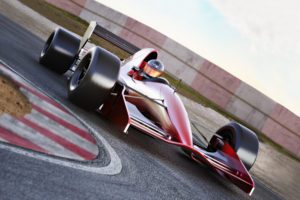 For my last couple of posts, I’ve drawn parallels between the “The Greatest Spectacle in Racing” – the Indianapolis 500 – and the current state of digital advertising because recent changes to Google’s Search Engine Results Page (SERP) have made competing for space a more rigorous contest. And in the last installment, I advised digital marketers to keep in mind there is more than one competitor on the track.
For my last couple of posts, I’ve drawn parallels between the “The Greatest Spectacle in Racing” – the Indianapolis 500 – and the current state of digital advertising because recent changes to Google’s Search Engine Results Page (SERP) have made competing for space a more rigorous contest. And in the last installment, I advised digital marketers to keep in mind there is more than one competitor on the track.
Sure, Google has the pole position. But other racers, such as Bing or YouTube and social-media contestants Facebook and Instagram, also are worth evaluating. These online venues can still yield excellent results. So, we walked through the garage and kicked a few tires.
OK. Some of the alternative vehicles look pretty slick. But admiring their gleaming chassis in the garage isn’t the same as jumping behind the wheel, gunning the engine and burning rubber on the track.
So, here are a few pointers for running the race…
Different Vehicle, Same Race
Just because you’re slipping into a new cockpit doesn’t mean your overall objective has changed. You want to finish in a competitive position – generating as many quality clicks as possible. To cross that finish line, you need to be comfortable in your new seat, knowing what your vehicle can and can’t handle. In other words, know what to expect in terms of performance. Don’t figuratively slam the gas pedal before you have had a few test laps in your new ride.
In marketing speak, this means you should move to new vehicles incrementally. If you want to explore other channels, pick one for your experimentation, rather than blanketing Bing and YouTube and Instagram and Facebook all at once. The digital world gives you hard data very rapidly, so you can conduct a test and know within days or weeks if it works for you.
Are Car & Driver Up to Specs?
No one just rolls up on race day and enters the Indy 500 field. Racing teams must qualify for the event, demonstrating that their cars and drivers are up to the challenge. In marketing terms, when you think about where to extend your digital advertising, which new channels to try, always consider your goals and your target market. As noted in earlier posts, your product may or may not play well on Instagram, and your target may or may not be more likely to be a Bing user.
One Car Can Run Two Races at the Same Time
My Indy 500 analogy finally has run out of gas. Because digital advertising is not limited by the constraints of the physical world. We’ve seen many clients who set up Bing ad accounts and put 10-20% of their budget in them, then let them run on auto-pilot while tending to the 80-90% of their campaigns in Google. As they make refinements in their Google AdWords campaigns, they don’t go back and make the same adjustments in Bing. But Bing has made it very easy to import your Google campaigns and keywords directly into Bing. So, by carefully choosing your channels and managing your digital advertising strategy, you can effectively drive one vehicle and have it compete simultaneously in two races.
That’s a feat not even the best Indy 500 driver can accomplish.